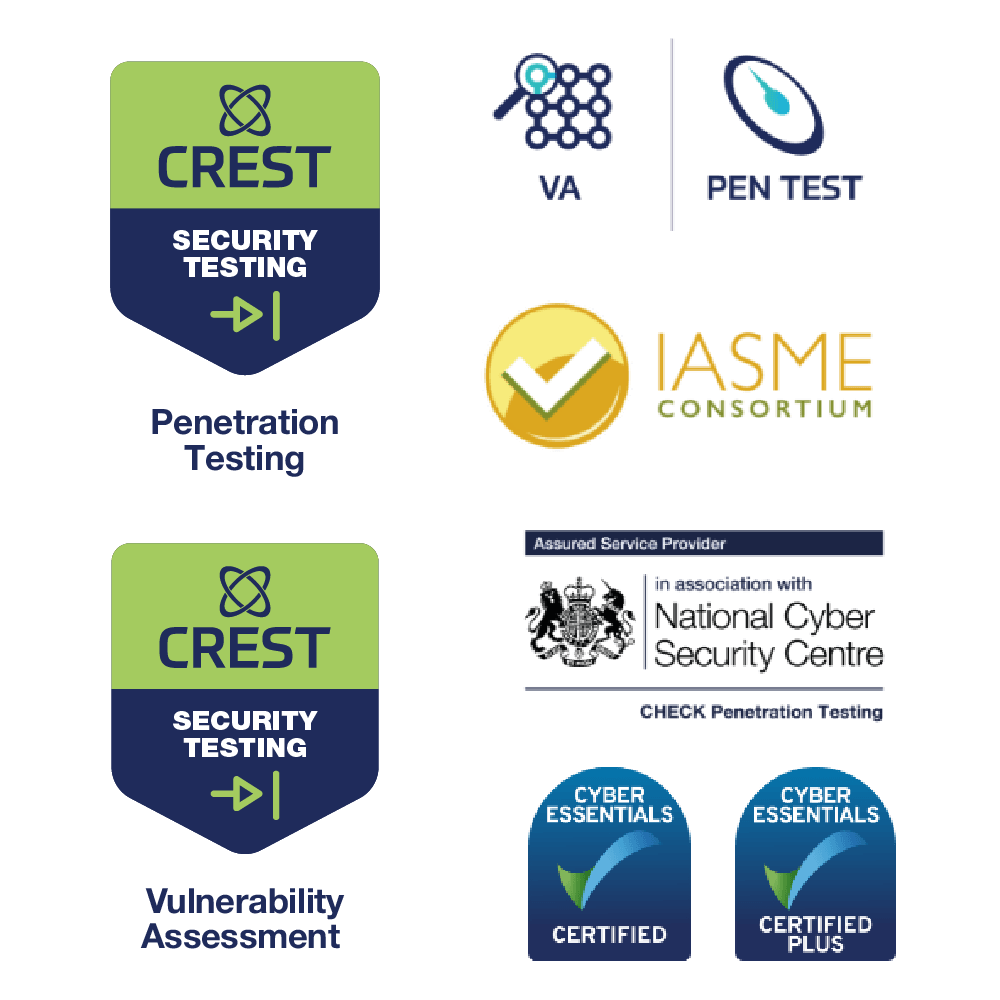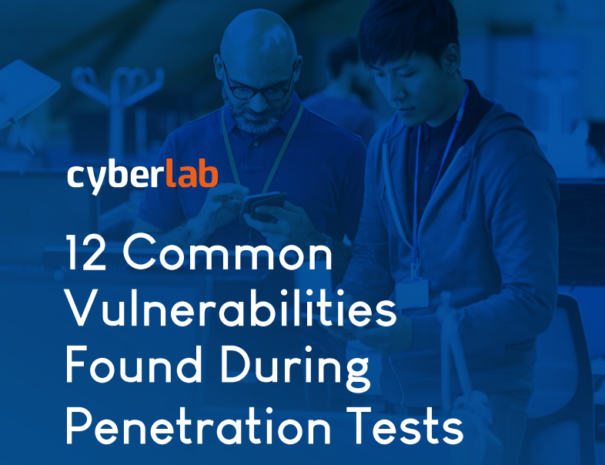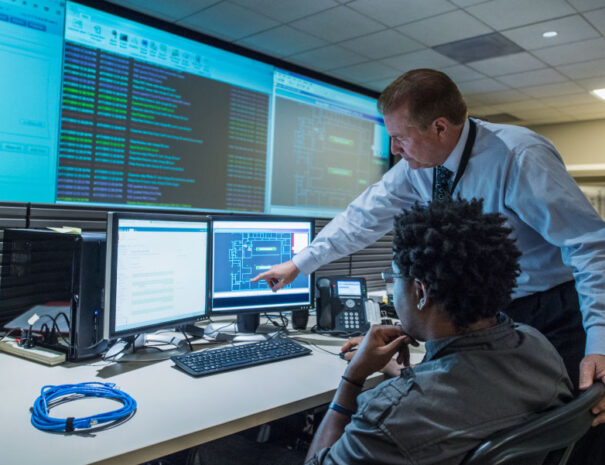Operational Technology Penetration Testing | Cyber Security Services
Detect.
Operational Technology Penetration Testing
Operational Technology (OT) Penetration Testing is a proactive approach to securing the systems that control your critical infrastructure and industrial processes.
By safely simulating cyberattacks within OT environments, we can identify vulnerabilities that could impact safety, availability, or productivity – helping your organisation strengthen its defences and maintain operational resilience against emerging threats.

Why Test Your Operational Technology?
Operational Technology is the hardware and software systems that monitor and control industrial equipment, infrastructure, and processes, such as SCADA systems, PLCs, and HMIs.
OT environments face unique cyber security challenges, including lack of in-built security, outdated systems and protocols, and remote access risks.
We evaluate the posture of these systems by simulating real-world cyberattacks to uncover vulnerabilities that could disrupt operations, compromise safety, or lead to data breaches.
Proactive Vulnerability Detection
Identify security gaps in your external systems before attackers exploit them.
Real-World Threat Simulation
See how your OT systems would hold up against a genuine attack, providing a practical assessment of your readiness for real-world threats.
Strengthened Security Posture
Gain actionable insights to prioritise remediation efforts and enhance the overall resilience of your public-facing systems.
Compliance and Assurance
Meet industry standards and regulatory requirements while demonstrating a commitment to protecting sensitive data and systems.
Traditional Testing vs Operational Technology Testing
What's the difference?
OT penetration testing requires a cautious, tailored approach – our team of specialists use adapted methodologies to avoid any disruption.
| Traditional IT Penetration Testing | OT Penetration Testing | |
|---|---|---|
| Environment | Corporate networks, web apps, endpoints | Industrial control systems, manufacturing lines, energy grids, etc |
| Risk Sensitivity | Moderate: testing can be more aggressive | High: testing must avoid disrupting live operations |
| Protocols & Devices | Standard protocols (e.g. TCP/IP, HTTP) | Uses proprietary protocols (e.g. Modbus, DNP3) and legacy devices |
| Testing Approach | Active scanning, broad vulnerability coverage | Passive reconnaissance, tailored exploitation, safety-first methodology |
| Stakeholders | IT teams, CISOs, developers | OT engineers, plant managers, compliance officers |
Types of Operational Technology
Our team of experts have extensive experience in penetration testing a range of OT systems and protocols.
These can be built into your testing plan at the scoping stage.
Programmable Logic Controllers (PLCs)
PLCs are computers used to control machinery and processes. Testing focuses on firmware, insecure protocols, and access controls.
Human-Machine Interfaces (HMIs)
HMIs allow operators to interact with control systems. Pen testing may identify weak authentication, exposed interfaces, or outdated software.
Supervisory Control and Data Acquisition (SCADA) systems
SCADA systems manage large-scale industrial operations. Tests target protocols, access, and data integrity.
Distributed Control Systems (DCS)
Used in complex industrial environments, DCS testing focuses on controller security, network isolation, and software vulnerabilities.
Industrial Control System (ICS) Networks
These networks connect OT components. Pen testing evaluates segmentation, firewall rules, and protocol-specific weaknesses.
Sensors and
Actuators
Components that collect real-time data (e.g., temperature, pressure, flow) or perform physical actions (e.g., opening valves, starting motors).
Remote Terminal Units (RTUs)
RTUs collect data from sensors and transmit it to SCADA systems. Vulnerabilities may include insecure firmware and encryption issues.
Industrial Protocols (Modbus, DNP3, etc.)
Testing involves analysing how these protocols are implemented and whether they are susceptible to spoofing, replay, or injection attacks.

Success Story
Futaba Manufacturing
From safeguarding manufacturing operations to proactive threat detection, Futaba Manufacturing UK (FMUK) relies on CyberLab’s expert solutions to protect their data and systems from evolving cyber risks.
“As a business committed to delivering exceptional quality and reliability to our customers, ensuring the continuity of our operations is paramount. CyberLab’s expertise in safeguarding our organisation against evolving cyber threats has been instrumental in protecting our reputation and maintaining our competitive edge. Their tailored solutions give us the confidence to focus on growth, innovation, and excellence.”
– Phil Ord, Managing Director, FMUK
Why Choose CyberLab?
CyberLab brings a unique blend of industrial expertise, CREST-certified consultants, and a proven methodology tailored for OT environments.
Here’s why clients trust CyberLab…
CREST & CHECK Accredited
Our expert testers are certified for both CREST and CHECK Green Light testing - an achievement not all testing companies can claim.
Custom Scoping & Reporting
Every engagement begins with a detailed scoping process to align with operational constraints and ends with actionable, executive-level reporting.
Experienced & Senior Consultants
Our team consists of highly experienced, senior consultants and penetration testers with over 15 years of industry expertise.
Outstanding Communication
Benefit from seamless two-way communication, secure upload portals, and NDA-backed confidentiality processes
Clear and Concise Reports
We provide easy-to-understand reports with detailed findings and actionable recommendations.
Safety-First Testing
Our approach ensures no disruption to critical operations, using passive techniques and controlled exploitation strategies.
Save Time and Money
You can count on us for faster testing without compromising quality - our clients consistently tell us we deliver superior results in less time.
Industry Experience
Having performed work across the energy, manufacturing, and government sectors, we understands the nuances of OT systems.
Penetration Testing: The CyberLab Approach
The way we structure our Pen Tests aligns closely with the steps taken by bad actors to target and compromise your systems. We replicate the approach of real-world adversaries to simulate and evaluate how your systems and processes respond to a cyber attack.
One of our CREST, CHECK, and Cyber Scheme certified consultants will work with you to define the scope of the engagement and ensure that our tests will fulfil your requirements.
Your assigned consultant will gather information on your organisation, including:
- IP addresses of websites and MX records
- Details of e-mail addresses
- Social networks
- People search
- Job search websites
This information will assist in identifying and exploiting any vulnerabilities or weaknesses.
Within the Threat Analysis stage we will identify a range of potential vulnerabilities within your target systems, which will typically involve a specialist engineer examining:
- Attack avenues, vectors, and threat agents
- Results from Research, Reconnaissance and Enumeration
- Technical system/network/application vulnerabilities
We will leverage automated tools and manual testing techniques at this stage.
Once we have identified vulnerabilities, we will attempt to exploit them in order to gain entry to the targeted system.
There are three phases to this stage:
Exploit – use vulnerabilities to gain access to a system, e.g. inject commands into an application that provide control over the target.
Escalate – attempt to use the exploited control over the target to increase access or escalate privileges to obtain further rights to the system, such as admin privileges.
Advance – attempt to move from the target system across the infrastructure to find other vulnerable systems (lateral movement) potentially using escalated privileges from target systems and attempting to gain further escalated privileges and access to the network.
Your Penetration Test Report will detail any identified threats or vulnerabilities, as well as our recommended remedial actions. Threats and vulnerabilities will be ranked in order of importance.
The report will also contain an executive summary and attack narrative which will explain the technical risks in business terms. Where required, we can arrange for your CyberLab engineer to present the report to the key stakeholders within your organisation.
The report will provide information on remedial actions required to reduce the threats and vulnerabilities that have been identified.
At this stage, we can provide you with the additional consultancy, products, and services to further improve your security posture.
CREST, CHECK & Cyber Scheme Certified
All our penetration testers hold CREST accreditation, with senior consultants certified to advanced CREST levels. Our testers are also qualified as CHECK Team Leaders (CTLs) or Team Members (CTMs) under the Government-backed National Cyber Security Centre (NCSC) scheme.
Security testers who pass the Cyber Scheme exams demonstrate competence and skill recognised at the highest levels by the NCSC.
Our team has decades of combined experience and takes pride in operating at the highest level of the industry – conducting a broad range of government and commercial tests – and always aims to go the extra mile.

Frequently Asked Questions
Operational Technology (OT) is the hardware and software used to monitor and control physical devices, processes, and infrastructure in industrial environments.
Unlike traditional IT systems that manage data, OT systems interact directly with the physical world – for example, controlling machinery on a factory floor, managing power grids, or regulating water treatment facilities.
OT includes components such as:
- Programmable Logic Controllers (PLCs)
- Human-Machine Interfaces (HMIs)
- Supervisory Control and Data Acquisition (SCADA) systems
- Distributed Control Systems (DCS)
- Sensors and actuators
OT penetration testing is a specialised form of cybersecurity assessment that evaluates the security posture of operational technology environments.
It involves simulating cyber attacks to identify vulnerabilities in OT systems, networks, and protocols – all while ensuring that testing does not disrupt critical operations.
Key aspects include:
- Assessing legacy systems and proprietary protocols (e.g., Modbus, DNP3)
- Evaluating network segmentation between IT and OT environments
- Identifying insecure configurations, outdated firmware, and exposed endpoints
- Testing physical access controls and remote access mechanisms
Unlike IT pen testing, OT testing requires a deep understanding of industrial processes and a cautious approach to avoid impacting safety or production.
OT testing prioritizes safety, uptime, and legacy protocols, whereas IT testing focuses on data confidentiality, integrity, and modern systems.
SCADA (Supervisory Control and Data Acquisition) systems are a subset of OT used to monitor and control industrial processes across large geographic areas — such as power plants, water distribution networks, and transportation systems.
SCADA operations involve:
- Collecting real-time data from sensors and field devices
- Sending control commands to remote equipment
- Displaying system status to operators via HMIs
- Logging events and alarms for analysis
SCADA penetration testing focuses on identifying vulnerabilities in these systems, including:
- Weak authentication or access controls
- Unencrypted communications between control centres and field devices
- Misconfigured firewalls or remote access points
- Risks from outdated software or firmware
Systems include PLCs, RTUs, HMIs, SCADA servers, DCS, and network components like switches and firewalls.
OT engineers, cybersecurity teams, plant managers, and third-party testers should collaborate to ensure safety and relevance.
Yes, physical access to OT systems is often part of the threat model and may be included in a comprehensive OT penetration test.
Physical security assessments evaluate how easily an attacker could gain unauthorised access to critical infrastructure components by bypassing physical barriers, controls, or procedures.
Your penetration test report will include vulnerabilities, risk ratings, exploitation paths, and remediation recommendations.
Use your report to remediate findings, update risk assessments, and, where appropriate, conduct a retest at a later stage to check your progress.
80% of CyberLab penetration testing customers book further tests with us.
Speak With an Expert
Enter your details and one of our specialists will be in touch.
Whether you’re looking to implement basic cyber security best practice, improve your existing defences, or introduce a new system or solution, our team of expert consultants, engineers, and ethical hackers are here to help.
Our team specialise in creating bespoke security solutions and testing packages to improve and maintain your security posture.
We are 100% vendor agnostic and will only ever recommend the best products and solutions for your requirements.
If you like this, then take a look at…



